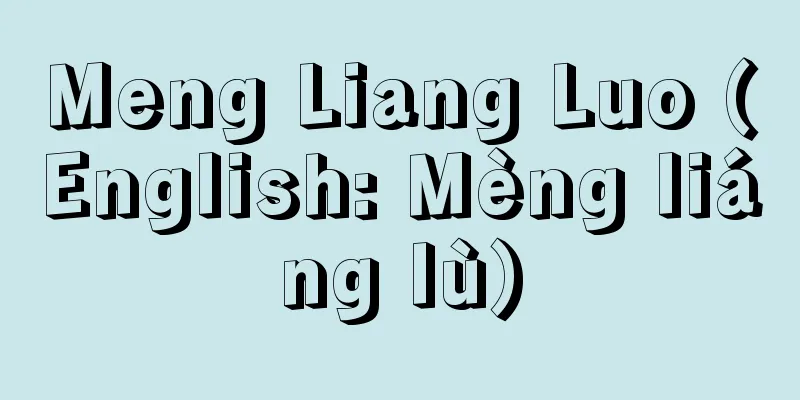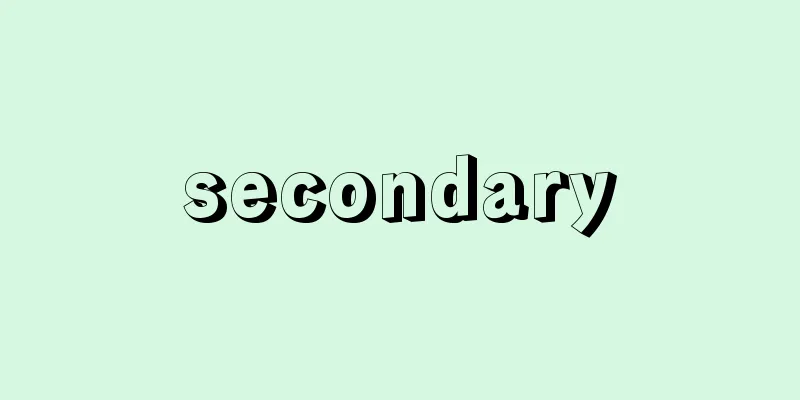Paul Gauguin
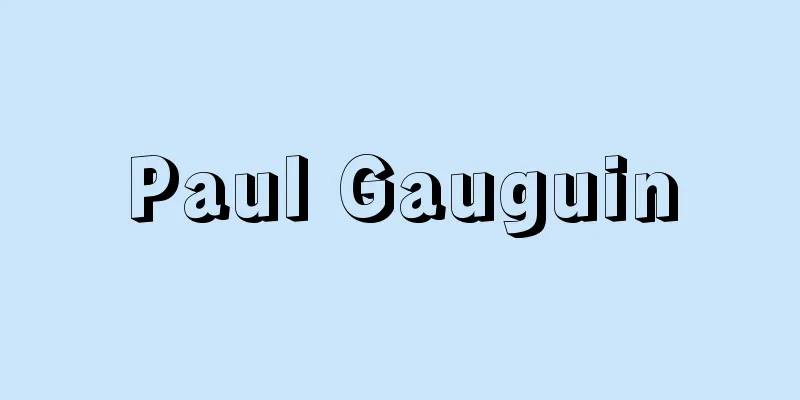
|
French Post-Impressionist painter. Starting from an impressionist style, he formed a new style of painting under the multifaceted influence of ukiyo-e, Romanesque sculpture, and folk crafts, and his symbolic themes, decorative composition, and subjective colors not only directly influenced the Nabis, but also provided many inspirations for contemporary painting. Furthermore, his eventful life, which was marked by two trips to Tahiti, is representative of the tragic alienation of artists at the end of the 19th century, along with that of Van Gogh. Born in Paris on June 7, 1848. His maternal grandmother was Flora Tristan, a Saint-Simonist feminist. His father was a republican journalist, and when Louis Napoleon's coup d'état took place, the whole family fled to Peru in South America. He lost his father aboard the ship and took refuge with his uncle. This childhood stay in Lima became one of his later paintings. After returning to France in 1855, he served as a sailor on a merchant ship on the South American and Scandinavian route between 1865 and 1871. From 1871, he worked as a clerk for the Paris stockbroker Bertin. He married the Danish Mette Gut, had five children, and lived a wealthy life with a considerable annual income, but during this time he became acquainted with Pissarro, and while collecting Impressionist works he also painted himself, exhibiting his works at the Salon in 1876 and at Impressionist exhibitions from 1880. Perhaps due to this confidence, and also to anxiety about the future of his business due to the economic depression, he decided to resign from Bertin & Co. in 1883 and devote himself to painting. However, his plans did not go as planned, and he continued to live in poverty in Rouen and Copenhagen, and he ended up being separated from his wife. However, he exhibited 19 oil paintings at the Impressionist exhibition in 1886, already showing the originality of his style. In the summer of the same year, he stayed in Pont-Aven in Brittany for the first time, and in the following year he stayed in Martinique. Already at this time, under the inspiration of Japanese prints and Cézanne, his style of painting changed, and during his second stay in Pont-Aven in 1888, he established his syntheticist style with works such as Jacob Wrestling with an Angel (Scottish National Gallery, Edinburgh). In the autumn of the same year, he lived with Van Gogh in Arles, and in 1889 he participated in a group exhibition at Café Volpini. From 1889 to 1890, as a leader of the Pont-Aven school, he produced works at Pont-Aven and Le Pourdu. He was also supported by Symbolist literary figures, frequenting the gatherings at Café Voltaire, and became one of the standard-bearers of Symbolist art of his time. In 1891, he sold his works and made his first trip to Tahiti. This adventure in search of the wilderness left him somewhat disillusioned, but it also produced works such as "I Adore Mary" (Metropolitan Museum of Art) and the book "Noah Noah" (published in Le Vieux Blanche magazine from 1897, edited by Charles Morris). He returned to Japan in 1893 and went to Tahiti again in 1895. He worked again in poverty, conflict with local authorities, and illness. However, it was during this time that he produced his most fulfilling works, including "Neva More" (1897, Courtauld Museum of Art) and "Where Do We Come From, Where Are We Going?" (1897, Museum of Fine Arts, Boston). In 1898, he attempted suicide but failed. However, he later found some time to spare with the help of Vollard and a few other enthusiasts, and produced fascinating works such as "Girl with Flowers" (1899, Metropolitan Museum of Art). Generally speaking, these works from his time in Tahiti are not necessarily faithful depictions of the local customs, but were conceived from a variety of sources and were the product of Gauguin's inner world as he sought the myth of paradise. In 1901, he moved to Atuana, Hiva Oa in the Marquesas Islands, where he died on May 8, 2003. Gauguin wrote several works in addition to the aforementioned "Noa Noa," but the semi-novel-like memoir of his life and work, "Avents et Après," was written in Atuana. A retrospective exhibition at the Salon d'Automne in 2003 was the catalyst for Gauguin's subsequent recognition and influence. In addition to painting, he also experimented with a variety of techniques, including woodcarving, ceramics, and printmaking, which are also important aspects of Gauguin's art. [Kimio Nakayama] "Complete Collection of Modern World Art 7: Gauguin, commentary by Awazu Norio (1970, Shueisha)" ▽ "Gauguin, by R. Goldwater, translated by Kamon Yasuo (1961, Bijutsu Shuppansha)" ▽ "World Biography Series 2: Gauguin, by Henri Perruchot et al., translated by Nishizawa Shinya (1983, Shogakukan)" ▽ "Noah Noah - A Journey to Tahiti, translated by Oshima Toshiharu" (included in "19 Masterpieces of Life," 1968, Yamato Shobo)" ▽ "Gauguin: Private Notes: Avants et Apres, translated by Maekawa Kenichi (1970, Bijutsu Shuppansha)" [References] | | | | |1891 Oil painting , Metropolitan Museum of Art Gauguin "I Adore Mary" 1893-1894 Woodblock print, Metropolitan Museum of Art Gauguin's "Noah Noah" 1887-1889 ( Collection of the Metropolitan Museum of Art ) Gauguin's "Vessel of Woman and Goat" Source: Shogakukan Encyclopedia Nipponica About Encyclopedia Nipponica Information | Legend |
|
フランス後期印象派の画家。印象主義的画風から出発し、浮世絵、ロマネスク彫刻、民俗工芸など多角的な影響のもとに、新しい画風を形成し、その象徴主義的テーマ、装飾的な画面構成、主観性の強い色彩などの点で、ナビ派などに直接影響を及ぼしたのみならず、現代絵画にも多くの啓示を与えた。また、その二度のタヒチ行きに彩られる波瀾(はらん)に富む人生は、ゴッホのそれとともに、19世紀末の芸術家の悲劇的な疎外を代表するものである。 1848年6月7日パリに生まれる。母方の祖母にサン・シモン派の女権論者フローラ・トリスタンがいる。父が共和主義のジャーナリストだったので、ルイ・ナポレオンのクーデターのとき、一家をあげて南米ペルーに亡命。その船中で父を失い、叔父のもとに身を寄せる。この幼年期のリマ滞在の思い出は、後の彼の画作の一つとなる。55年帰国後、65~71年の間、水夫として南米、スカンジナビア航路の商船に乗り組む。71年より、パリの株式仲買商ベルタンの店員として勤務。デンマーク人メット・ガットと結婚し、5子をもうけ、かなりの年収を得る豊かな生活を送るが、その間ピサロと知り合い、印象派の作品の収集を行うかたわら自らも描き、76年のサロンに出品、80年から印象派展にも出品。おそらくその自信と、他方で経済恐慌による商売の先行きへの不安から、83年ベルタン商会を退職し、絵画に専念することを決意。しかし、彼の目算は外れ、ルーアン、コペンハーゲンと彼の困窮の生活が続き、妻とは別居状態となる。しかし86年の印象派展には19点の油彩を出品し、すでに彼の画風の独創性をみせている。 同年夏、ブルターニュのポンタバンに最初の滞在。翌年マルティニーク島に滞在。すでにこの時期から、浮世絵やセザンヌの啓示下に画風に変化がおこり、1888年の二度目のポンタバン滞在では『ヤコブと天使の格闘』(エジンバラ、スコットランド国立美術館)などによって総合主義を確立した。同年秋、アルルでのゴッホとの共同生活、89年にはカフェ・ボルピニでのグループ展。89~90年には、ポンタバン派のリーダーとして、ポンタバン、ル・プールデュで制作。また象徴派の文学者によっても支援され、カフェ・ボルテールの集いにも出入りし、同時代の象徴主義芸術の旗手の一人となった。 1891年、作品の売り立てを行い、第1回のタヒチ行きを実現。野性を求めたこの冒険は、彼にある種の幻滅を味わわせたが、『われマリアを拝す』(メトロポリタン美術館)などの成果、あるいは著作『ノア・ノア』(シャルル・モリス編で97年より『ルビュ・ブランシュ』誌に掲載)を実らせる。93年帰国、95年再度のタヒチ行き。ふたたび困窮、土地の官憲との抗争、病気のなかでの制作。しかし、『ネバ・モア』(1897・コートールド美術館)、『われらいずこより来たり、いずこへ行くか』(1897・ボストン美術館)など、もっとも充実した制作がなされる。98年には自殺を試みて失敗。しかし、その後ボラールや若干の愛好家たちの援助によって多少のゆとりを得て、『花を抱える娘』(1899・メトロポリタン美術館)などの魅惑的な作品を制作。概してこれらのタヒチ時代の作品は、かならずしも同地の風俗の忠実な描写ではなく、さまざまな発想源から構想されたもので、楽園の神話を求めるゴーギャンの内面の産物である。 1901年、マルケサス諸島のヒバ・オアのアトゥアナに移り、03年5月8日、同地に没した。ゴーギャンは前述の『ノア・ノア』以外にもいくつかの著作を残したが、彼自身の生涯と作品に関するなかば小説的な回想『アバン・エ・アプレ』はアトゥアナでの著作。03年のサロン・ドートンヌでの回顧展は、その後のゴーギャンの評価と影響の契機となった。また画作以外に、木彫、陶器、版画など多様な技法を試みたが、これらもゴーギャンの芸術の重要な側面である。 [中山公男] 『粟津則雄解説『現代世界美術全集7 ゴーギャン』(1970・集英社)』▽『R・ゴールドウォーター著、嘉門安雄訳『ゴーガン』(1961・美術出版社)』▽『アンリ・ペリュショ他著、西沢信弥訳『世界伝記双書2 ゴーギャン』(1983・小学館)』▽『大島利治訳「ノア・ノア――タヒチ紀行」(『人生の名著19』所収・1968・大和書房)』▽『前川堅市訳『ゴーガン 私記アバン・エ・アプレ』(1970・美術出版社)』 [参照項目] | | | | |1891年 油彩メトロポリタン美術館所蔵"> ゴーギャン『われマリアを拝す』 1893~1894年 木版画メトロポリタン美術館所蔵"> ゴーギャン『ノア・ノア』 1887~1889年ころメトロポリタン美術館所蔵"> ゴーギャン『女性と山羊の器』 出典 小学館 日本大百科全書(ニッポニカ)日本大百科全書(ニッポニカ)について 情報 | 凡例 |
Recommend
Associated Container Transportation, Ltd.
…In addition to operating other shipping division...
Saurida elongata (English spelling) Sauridaelongata
…[Kawaguchi Koichi]. … *Some of the terminology t...
Hisakaki - Hisakaki
An evergreen shrub of the Theaceae family (APG cl...
Kido Shogiku
...A politician from the end of the Edo period an...
Kaikaimono - Kaikaimono
...However, it seems better to consider the enlig...
Song and Yuan Dynasty Study Plan
A book that records the academic history of the So...
Markowa
British female dancer. Her real name was Lillian A...
Adenoid hyperplasia - Adenoid vegetation
What is the disease? Pharynx ( Into ) (Throat) To...
Urakami Cathedral
A Catholic church in Motoo-machi, Nagasaki City. ...
Celestial Mechanics
A field of study that describes the motion of cel...
Hastings, Warren
Born: December 6, 1732, Churchill, Oxfordshire [Di...
Kannon Gorge
…The river originates in the Qinling Mountains in...
Cluj-Napoca (English spelling)
…Population: 326,000 (1994). The current official...
Liquid egg - Ekiran
A type of processed egg made by cracking the shell...
primary commodities
…Generally, primary commodities refer to agricult...

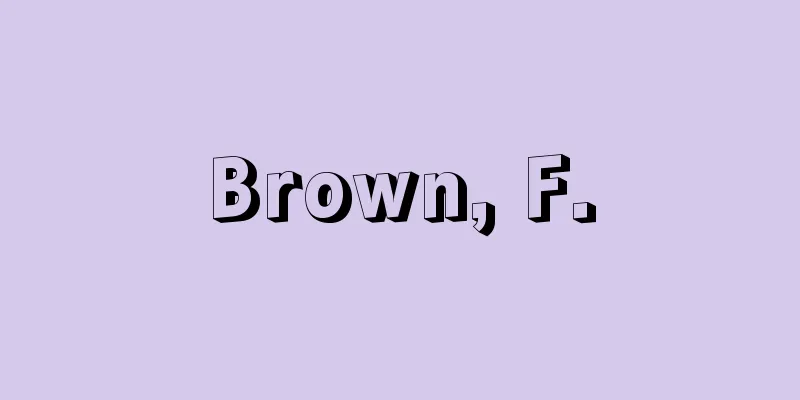

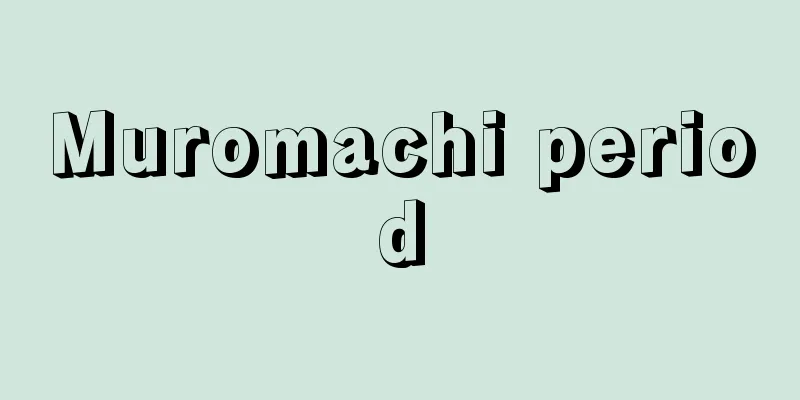

![Katase [Hot Spring] - Katase](/upload/images/67cb36310c988.webp)

